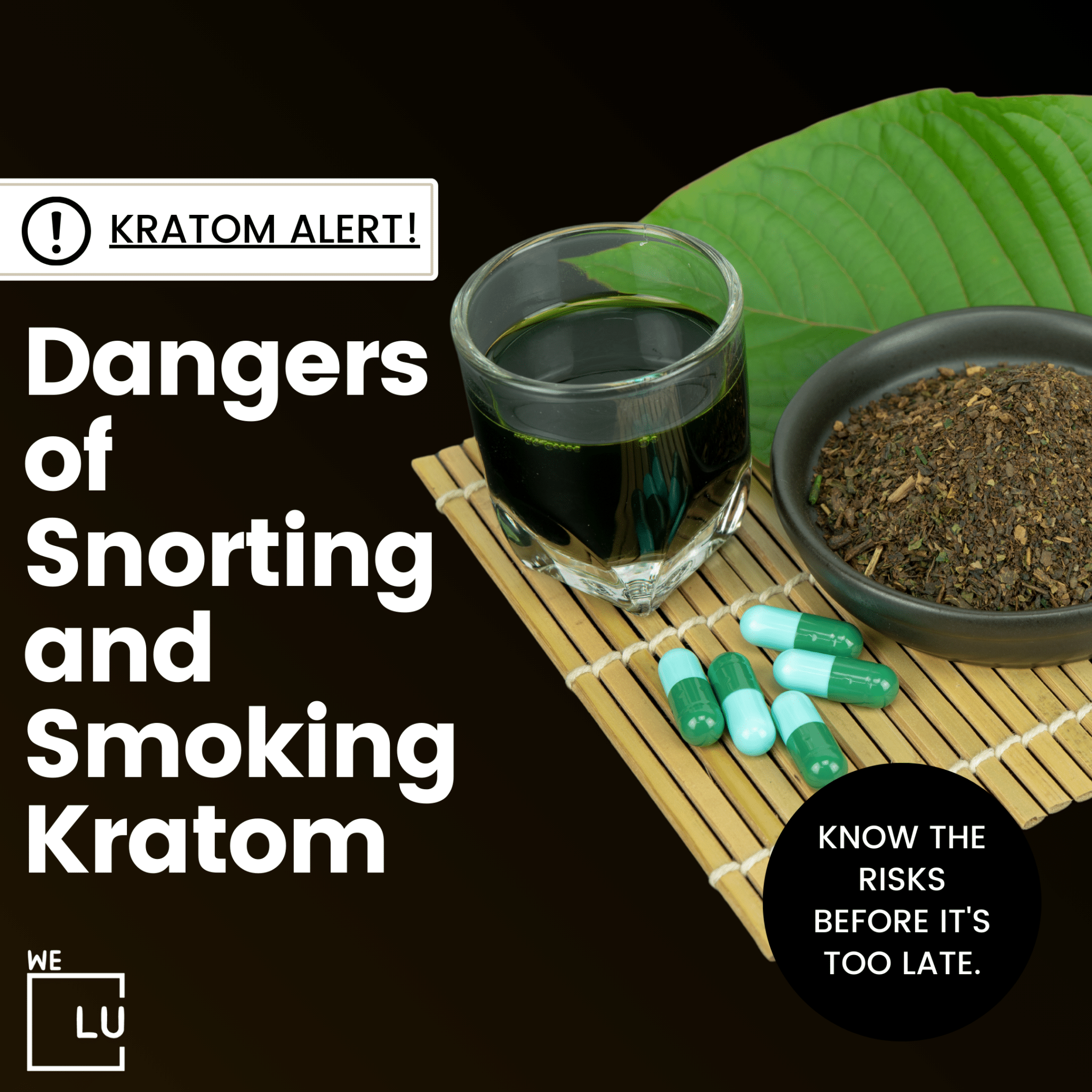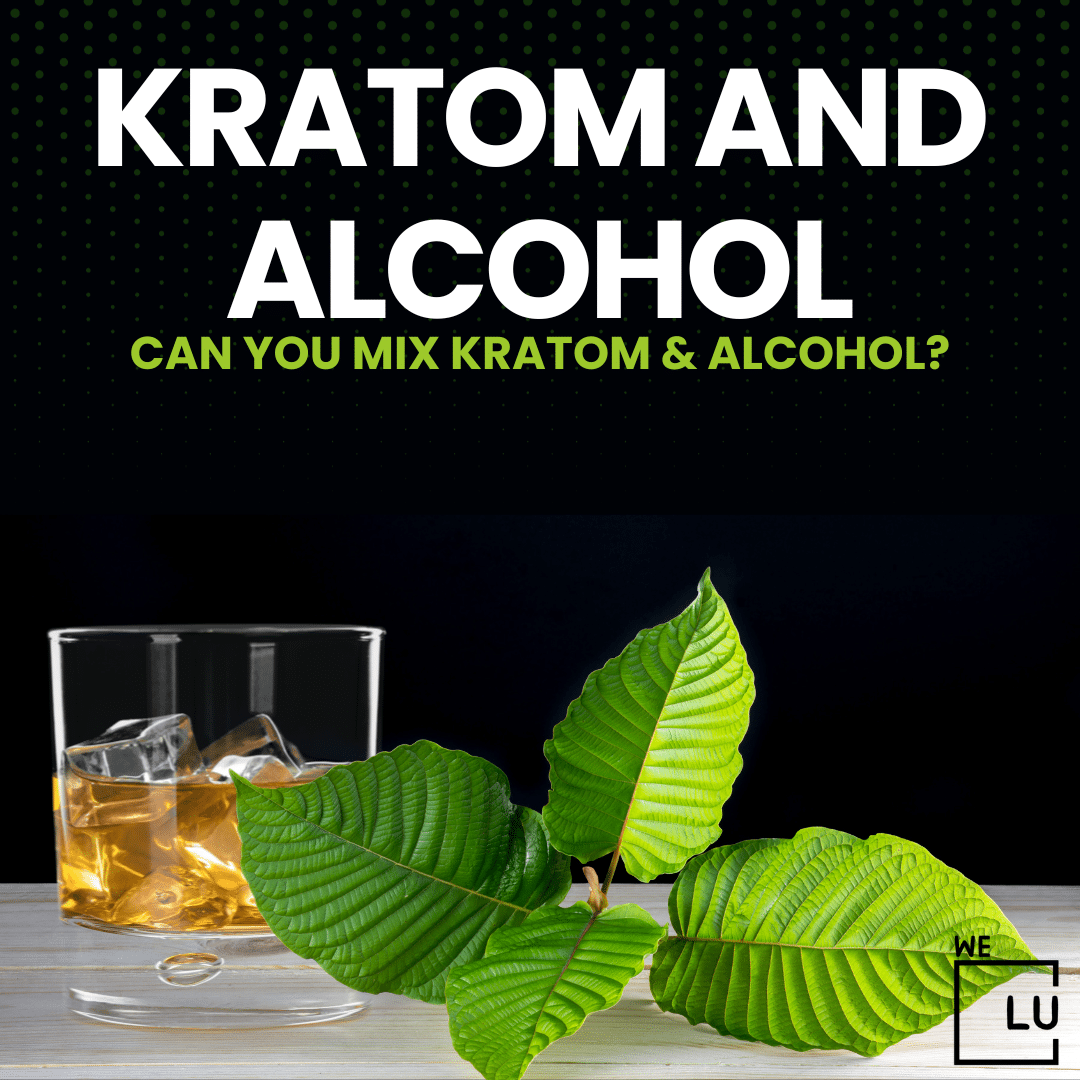What are Muscle Relaxers?
Muscle relaxers, also known as muscle relaxants, are a class of medications that act on the central nervous system to reduce muscle tension or spasms. These medications are commonly prescribed to alleviate muscle-related pain and discomfort associated with muscle spasms, injuries, or certain musculoskeletal conditions. Muscle relaxers are often part of a comprehensive treatment plan that may include rest, physical therapy, and other interventions.
There are two kinds of Muscle Relaxers: Antispastic and Antispasmodics. Antispastic medications target the spinal cord or skeletal muscles to alleviate muscle tightness and spasms. In comparison, Antispasmodics reduce muscle spasms by affecting the central nervous system. These two Muscle Relaxers have different effects and should not be used interchangeably.
While muscle relaxers can be effective for short-term relief of muscle-related pain and discomfort, they are not a cure for underlying conditions. Prolonged or inappropriate use of these medications can lead to side effects and complications.
What Do Muscle Relaxers Do?
Muscle Relaxants can have several effects on the muscles and the nervous system, including:
- Central Nervous System Depression: Many muscle relaxants have a central nervous system depressant effect, meaning they can reduce the activity of the brain and spinal cord. This can lead to a calming effect and decreased signals that cause muscle spasms.
- Sedation: Some muscle relaxers can cause drowsiness or sedation as a side effect. This sedative effect can be helpful for individuals experiencing muscle spasms or tension that may be exacerbated by stress or anxiety.
- Interference with Nerve Signals: Certain muscle relaxants act on nerve signals to reduce the transmission of messages between nerves and muscles. This can result in a decrease in muscle contractions and spasms.
- Increased Blood Flow: Some muscle relaxants may have vasodilatory effects, which can widen blood vessels. This increased blood flow can help in reducing muscle stiffness and promoting relaxation.
- Pain Relief: By reducing muscle spasms and tension, muscle relaxers can indirectly contribute to pain relief, especially in conditions where muscle-related pain is a significant symptom.
Muscle relaxers are typically prescribed for short-term use to address acute muscle-related conditions, such as strains, sprains, or spasms. They are not typically recommended for long-term use due to the risk of side effects and the potential for dependency. Additionally, these medications should be used under the supervision and prescription of a healthcare professional, as individual responses to these drugs can vary, and they may interact with other medicines or conditions.
How Long Do Muscle Relaxers Last?
Individual responses to medications can vary, and the specific duration of action may be influenced by factors such as the formulation of the drug, the severity of the condition being treated, and the individual’s metabolism. The information provided here is a general guide, and individuals should always follow their healthcare provider’s prescribed dosage and schedule.
Antispasmodics
| Muscle Relaxer | Duration of Action |
|---|---|
| Valium (Diazepam) | 4 to 6 hours (effects can last longer due to active metabolites) |
| Soma (Carisoprodol) | 4 to 6 hours |
| Flexeril (Cyclobenzaprine) | 4 to 6 hours (immediate-release), longer for extended-release formulations |
| Skelaxin (Metaxalone) | 4 to 6 hours |
Antispastics
| Muscle Relaxer | Duration of Action |
|---|---|
| Lioresal (Baclofen) | Varies; often taken multiple times per day |
| Dantrium (Dantrolene) | Varies; often taken multiple times per day |
| Zanaflex (Tizanidine) | 4 to 6 hours |
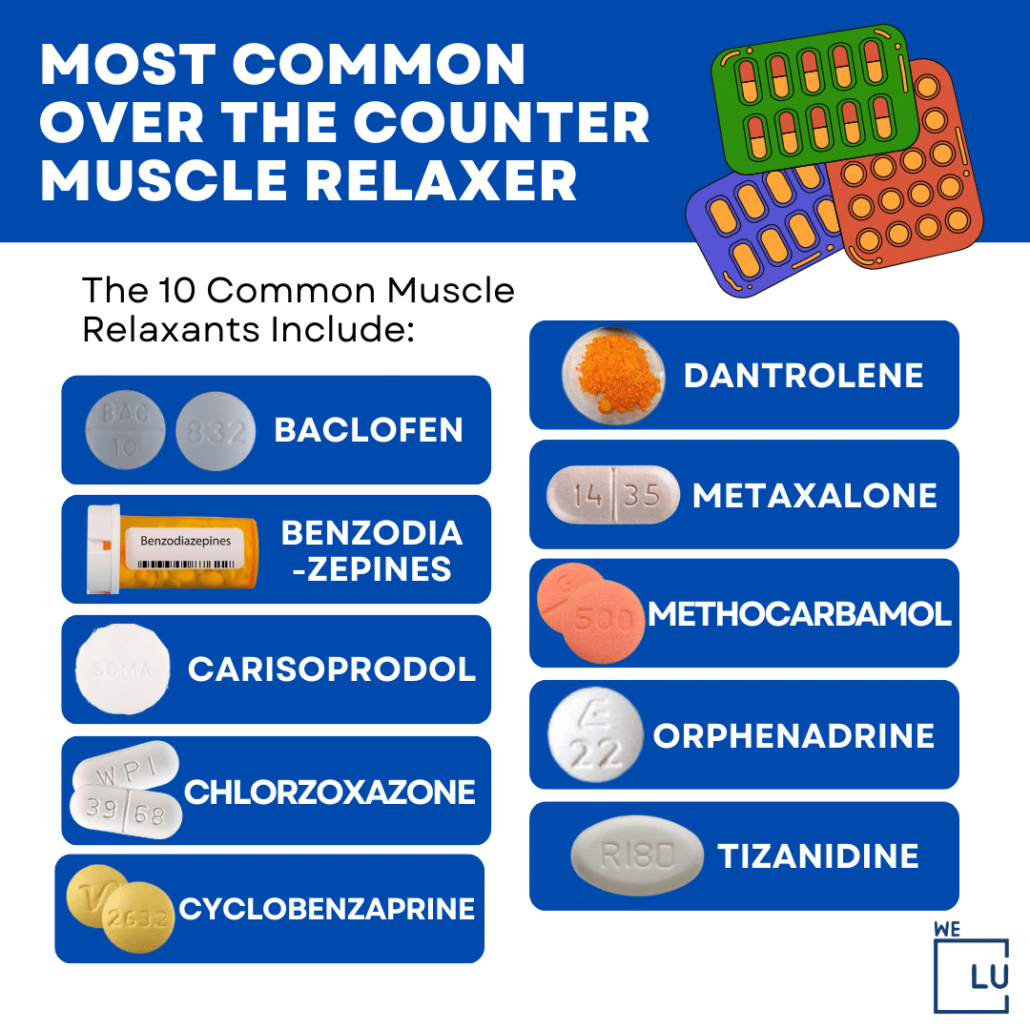
Skip To:
Learn More:
- Over-the-Counter Muscle Relaxers, Effects, Abuse, Withdrawal & Treatment
- Muscle relaxers and alcohol, What to do, Risks, Dangers, Withdrawal, Other Interactions & Addiction
- Diazepam (valium) addiction, Signs, Dangers, Causes, Drug Combinations, Withdrawal & Treatment
- How long does valium stay in your system? Metabolites, Factors of Influence, Interactions, Valium Addiction & Treatment
Are you concerned about Muscle Relaxant Addiction? Join others who trust We Level Up for substance abuse treatments. Call 24/7. Your call is free and confidential.

Get Your Life Back
Find Hope & Recovery. Get Safe Comfortable Detox, Addiction Rehab & Dual Diagnosis High-Quality Care.
Hotline (855) 695-1160How Do Muscle Relaxers Work?
The way Muscle Relaxers work can vary depending on the specific type of muscle relaxant. Here are some common ways in which muscle relaxers work:
- Central Nervous System Depression: Many muscle relaxants exert a depressant effect on the central nervous system (CNS). They act on the brain and spinal cord to reduce neural activity. This CNS depression can result in a calming effect and a decrease in signals that cause muscle spasms.
- Enhanced Inhibitory Neurotransmission: Some muscle relaxers strengthen the activity of inhibitory neurotransmitters, such as gamma-aminobutyric acid (GABA). GABA is a neurotransmitter that has a calming effect on the nervous system. By increasing GABA activity, these muscle relaxants dampen nerve signals, leading to muscle relaxation.
- Direct Action on Muscles or Nerves: Certain muscle relaxants act directly on the muscles or the nerves controlling the muscles. They may interfere with the transmission of signals between nerves and muscles, reducing muscle contractions and spasms.
- Vasodilation: Some muscle relaxants have vasodilatory effects, which widen blood vessels. This increased blood flow to the affected muscles can help alleviate stiffness and promote relaxation.
Choosing a specific muscle relaxant depends on the underlying condition and the desired therapeutic effect.
Types of Muscle Relaxers
Antispasmodics
Antispasmodic muscle relaxants are a class of medications that work to alleviate muscle spasms, tension, or rigidity. These medications target the central nervous system to reduce abnormal muscle contractions. Here are some common antispasmodic muscle relaxants:
- Cyclobenzaprine (Flexeril): Cyclobenzaprine treats muscle spasms and is often prescribed for short-term use.
- Methocarbamol (Robaxin): Methocarbamol relieves muscle stiffness and is commonly prescribed for acute musculoskeletal conditions.
- Carisoprodol (Soma): Carisoprodol is used for short-term relief of muscle discomfort and is often combined with rest and physical therapy.
- Metaxalone (Skelaxin): Metaxalone is prescribed to relieve discomfort associated with acute musculoskeletal conditions.
- Diazepam (Valium): While primarily a benzodiazepine, diazepam is sometimes used to manage spasticity in certain neurological disorders.
These antispasmodic muscle relaxants may have different mechanisms of action, and the choice of medication depends on the specific condition being treated, the patient’s medical history, and the potential side effects.
Antispastics
Antispastic muscle relaxants are a class of medications specifically designed to reduce muscle spasticity. Involuntary muscle contractions, stiffness, and spasms characterize spasticity. The spinal cord or skeletal muscles to alleviate muscle tightness and spasms. Here are some common antispastic muscle relaxants:
- Baclofen (Lioresal): Baclofen is often used to treat spasticity associated with multiple sclerosis, spinal cord injuries, or cerebral palsy.
- Tizanidine (Zanaflex): Tizanidine is prescribed to manage spasticity related to neurological conditions, including multiple sclerosis and spinal cord injuries.
- Dantrolene (Dantrium): Dantrolene treats spasticity associated with conditions such as cerebral palsy, spinal cord injuries, and multiple sclerosis.
The choice of antispastic muscle relaxant depends on the specific condition, the severity of spasticity, and individual patient factors. These medications are typically prescribed and monitored by healthcare professionals, and their use is often part of a broader treatment plan that may include physical therapy and other interventions.
Get Help. Get Better. Get Your Life Back.
Searching for an Accredited Drug and Alcohol Rehab Centers in Near You?
Even if you have failed previously and relapsed, or are in the middle of a difficult crisis, we stand ready to support you. Our trusted behavioral health specialists will not give up on you. When you feel ready or just want someone to speak to about therapy alternatives to change your life call us. Even if we cannot assist you, we will lead you to wherever you can get support. There is no obligation. Call our hotline today.
FREE Addiction Hotline – Call 24/7Effects of Muscle Relaxers
What does a Muscle Relaxer do? Here are some common effects of muscle relaxers:
- Muscle Relaxation: The primary effect is the reduction of muscle spasms, allowing for muscle relaxation. This can help alleviate pain, stiffness, and discomfort associated with muscle strains or injuries.
- Sedation: Many muscle relaxers have a soothing effect on the central nervous system, leading to drowsiness or sleepiness. This can be beneficial, especially when muscle spasms contribute to difficulty sleeping.
- Improved Range of Motion: By reducing muscle spasms and tension, muscle relaxers can enhance the range of motion. This is particularly relevant for conditions characterized by muscle rigidity or spasticity.
- Pain Relief: Muscle relaxers may indirectly relieve pain by addressing the underlying cause of muscle spasms and tension. This can be helpful in conditions where muscle-related pain is a significant symptom.
- Calming Effect: Some muscle relaxers, particularly those with soothing properties, may have a calming effect on the central nervous system. This can be beneficial for individuals experiencing anxiety or stress-related muscle tension.
Side Effects
Muscle relaxants, like any medications, can have potential side effects. Individuals need to be aware of these side effects and consult with their healthcare provider if they experience any concerns. Common side effects of muscle relaxants may include:
- Drowsiness: Many muscle relaxants are soothing, leading to drowsiness or sleepiness. This can impair concentration and coordination.
- Dizziness: Some individuals may experience dizziness or lightheadedness, especially when standing up quickly. It’s important to rise from a sitting or lying position gradually.
- Dry Mouth: Muscle relaxants may cause a reduction in saliva production, leading to a dry mouth.
- Fatigue: Feelings of tiredness or fatigue are common side effects, and individuals may have reduced energy levels.
- Headache: Headaches can occur as a side effect of certain muscle relaxants.
- Nausea: Some individuals may experience nausea or an upset stomach.
- Blurred Vision: Muscle relaxants may cause temporary blurred vision or difficulty focusing.
- Constipation: A decrease in bowel movements and constipation can occur with certain muscle relaxants.
- Muscle Weakness: In some cases, muscle relaxants may cause temporary weakness in the affected muscles.
- Allergic Reactions: While rare, allergic reactions such as skin rash or swelling can occur. Seek medical attention if you experience signs of an allergic reaction.
Specific side effects can vary depending on the type of muscle relaxant prescribed and the individual’s response to the medication. Additionally, certain precautions and considerations, such as avoiding alcohol or specific activities, may be advised while taking muscle relaxants. Individuals should always follow their healthcare provider’s guidance, report any unusual side effects, and inform them of any other medications they may be taking to avoid potential interactions.
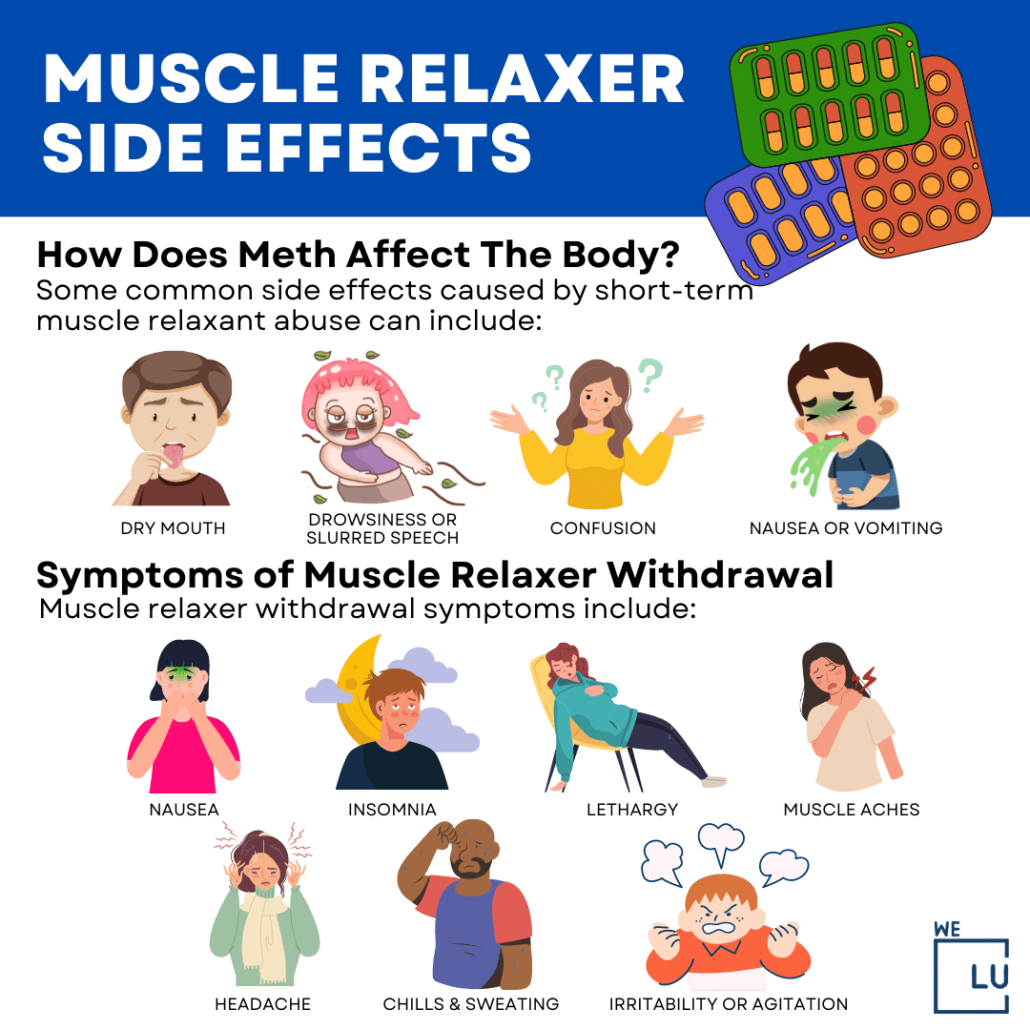
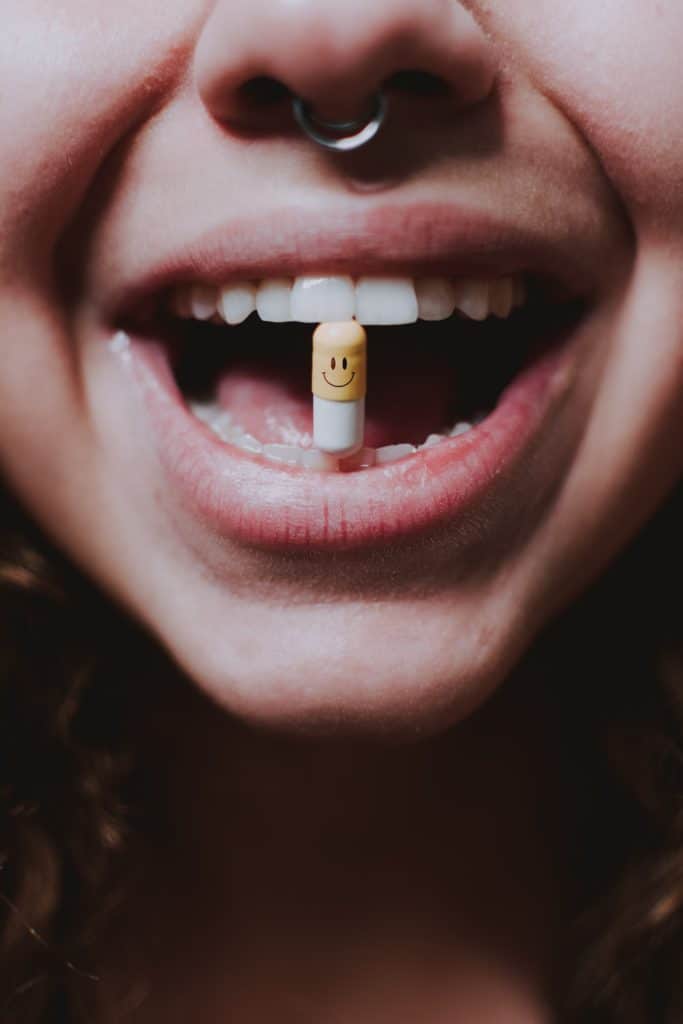
How Do Muscle Relaxers Make You Feel?
What do Muscle Relaxers feel like? Muscle relaxers typically induce physical relaxation by alleviating muscle tension and spasms. The intended effect is reduced pain, stiffness, and discomfort associated with conditions such as muscle strains or injuries.
Do Muscle Relaxers Make You Sleepy?
Yes, many muscle relaxers have sedative properties that can induce drowsiness or sleepiness as a side effect. This sedative effect results from the medications’ impact on the central nervous system, particularly the brain. Muscle relaxers with these soothing properties may make individuals sleepy or fatigued, especially after a dose. This drowsiness is why healthcare providers often recommend taking muscle relaxers, particularly those with sedative effects, when it’s safe to rest, such as before bedtime.
Do Muscle Relaxers Help With Pain?
Yes, muscle relaxers can help with pain, particularly when the pain is associated with muscle spasms, tension, or stiffness.
Do Muscle Relaxers Cause Constipation?
Yes, constipation is a potential side effect of some muscle relaxers. The medications that commonly cause constipation are those with central nervous system depressant effects, particularly those with sedative properties. The muscle-relaxing and sedative effects of these medications can extend beyond the intended impact on muscle spasms, affecting other bodily functions, including bowel movements.
Comfortable Facilities & Amenities
High-Quality Addiction & Mental Health Rehabilitation Treatment
Rehab Centers TourRenowned California Addiction Center. Serene Private Facilities. Inpatient rehab programs vary.
Addiction Helpline (855) 695-1160Proven recovery success experience, backed by a Team w/ History of:
15+
Years of Unified Experience
100s
5-Star Reviews Across Our Centers
10K
Recovery Success Stories Across Our Network
- Low Patient to Therapist Ratio
- Onsite Medical Detox Center
- Comprehensive Dual-Diagnosis Treatment
- Complimentary Family & Alumni Programs
- Coaching, Recovery & Personal Development Events
Are Muscle Relaxers Addictive?
Most muscle relaxers are not considered highly addictive on their own, mainly when used as prescribed for short-term treatment of specific conditions. However, some muscle relaxers, particularly those with sedative properties, can have the potential for misuse or dependence, significantly when misused or for an extended period.
Benzodiazepines, a class of medications that includes some muscle relaxers, are known for their potential to lead to physical and psychological dependence. Examples of muscle relaxers with potential sedative effects that belong to the benzodiazepine class include diazepam (Valium) and lorazepam (Ativan).
Non-benzodiazepine muscle relaxers, such as cyclobenzaprine (Flexeril), tizanidine (Zanaflex), and baclofen, are generally considered to have a lower risk of addiction. However, dependence or misuse can still occur, especially if the medication is not taken as prescribed or if it is used recreationally.
Individuals must use muscle relaxers only as directed by their healthcare provider, follow prescribed dosages, and communicate any concerns about dependency or misuse promptly. Abruptly stopping the use of muscle relaxers, especially those with the potential for dependence, should be done under the guidance of a healthcare professional to minimize withdrawal symptoms and ensure a safe discontinuation process. If there are concerns about the potential for addiction, individuals should discuss them openly with their healthcare provider to explore alternative treatment options.
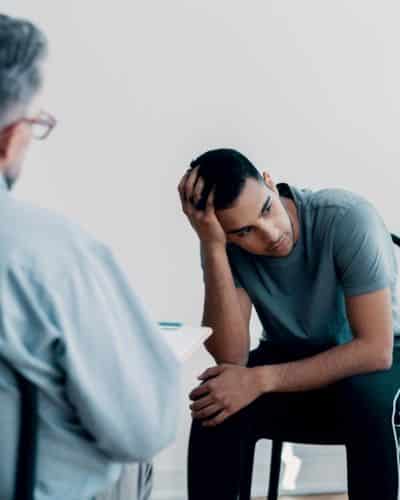
World-class, Accredited, 5-Star Reviewed, Effective Addiction & Mental Health Programs. Complete Behavioral Health Inpatient Rehab, Detox plus Co-occuring Disorders Therapy.
CALL (855) 695-1160End the Addiction Pain. End the Emotional Rollercoaster. Get Your Life Back. Start Drug, Alcohol & Dual Diagnosis Mental Health Treatment Now. Get Free No-obligation Guidance by Substance Abuse Specialists Who Understand Addiction & Mental Health Recovery & Know How to Help.
Muscle Relaxers Overdose
Overdosing on muscle relaxers can have severe and potentially life-threatening consequences. The severity of the overdose depends on factors such as the type of muscle relaxer, the dosage taken, and individual factors like overall health and tolerance to the medication.
Symptoms of a muscle relaxer overdose may include:
- Extreme Drowsiness: Excessive sleepiness or an inability to stay awake.
- Dizziness or Lightheadedness: Difficulty maintaining balance or coordination.
- Confusion: Mental confusion or difficulty thinking clearly.
- Weakness: A profound sense of weakness or lethargy.
- Difficulty Breathing: Shallow or slowed breathing.
- Loss of Consciousness: Unresponsiveness or loss of consciousness.
- Seizures: In some cases, an overdose can lead to seizures.
If someone is suspected of having overdosed on muscle relaxers, seek emergency medical attention immediately. Contact emergency services or go to the nearest emergency room.
Treatment for a muscle relaxer overdose may involve supportive care, which can include monitoring vital signs, administering medications to counteract the effects of the overdose, and addressing any complications that may arise.
Never take more than the prescribed dosage of muscle relaxers, and follow healthcare providers’ instructions carefully. If there are concerns about the effectiveness or side effects of the medication, individuals should consult their healthcare provider rather than attempting to adjust the dosage independently.
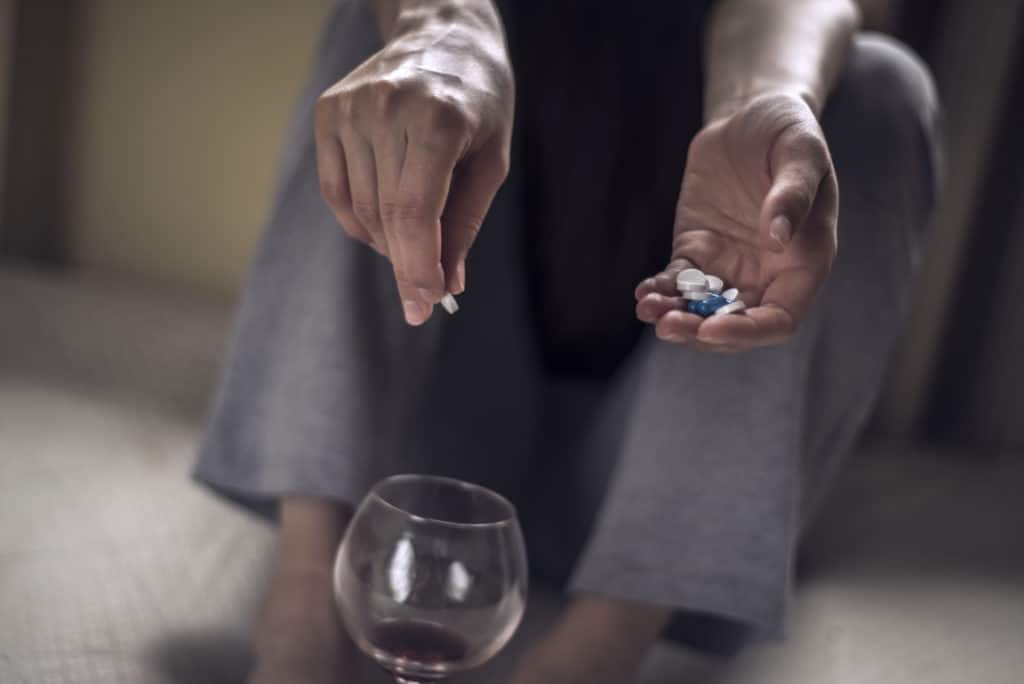
Muscle Relaxers Drug Interactions
Muscle relaxers can interact with other medications, potentially leading to adverse effects or reduced effectiveness. Individuals need to inform their healthcare providers about all medicines, supplements, and herbal products they are taking to avoid potential drug interactions. Some everyday drug interactions involving muscle relaxers include:
- Central Nervous System Depressants: Combining muscle relaxers with other central nervous system depressants, such as opioids, benzodiazepines, or alcohol, can increase the risk of sedation, respiratory depression, and impaired cognitive function.
- Antidepressants: Certain muscle relaxers, especially those with sedative effects, can interact with antidepressant medications, leading to increased drowsiness or dizziness.
- Antihistamines: Combining muscle relaxers with antihistamines can enhance sedative effects and may increase the risk of drowsiness.
- Antipsychotics: Muscle relaxers may interact with antipsychotic medications, potentially causing additive sedative effects and central nervous system depression.
- Certain Antibiotics: Some antibiotics, such as fluoroquinolones, may interact with certain muscle relaxers, increasing the risk of side effects.
- Grapefruit Juice: Grapefruit juice can inhibit the metabolism of certain medications, potentially leading to increased concentrations in the blood. This interaction may affect muscle relaxers metabolized by specific enzymes.
- CYP3A4 Inhibitors: Medications that inhibit the CYP3A4 enzyme in the liver can affect the metabolism of certain muscle relaxers, potentially leading to increased blood concentrations.
Individuals need to communicate openly with their healthcare provider about their complete medication regimen to identify and manage potential drug interactions. Healthcare providers can adjust dosages, recommend alternative medications, or provide guidance on safe coadministration based on individual medical histories and needs.
Experience Transformative Recovery at the We Level Up California Treatment Center.
See our authentic success stories. Get inspired. Get the help you deserve.



Start a New Life
Begin with a free call to an addiction & behavioral health treatment advisor. Learn more about our dual-diagnosis programs. The We Level Up treatment center network delivers recovery programs that vary by each treatment facility. Call to learn more.
- Personalized Care
- Caring Accountable Staff
- World-class Amenities
- Licensed & Accredited
- Renowned w/ 100s 5-Star Reviews
We’ll Call You
Substance Abuse Treatment Criteria. How to Get Free Substance Abuse Evaluation? Hotline & Resources.
Search What Do Muscle Relaxers Do, Drug & Alcohol Rehab / Detox & Mental Health Topics & Resources
Sources
- Conermann, T., et al. (2020). Carisoprodol. http://www.ncbi.nlm.nih.gov/books/NBK553077/. Related: What do muscle relaxers do?
- Dhaliwal, J. S., et al. (2020). Diazepam. http://www.ncbi.nlm.nih.gov/books/NBK537022/ Related: What do muscle relaxers do?
- Ghanavatian, S., et al. (2020). Baclofen. http://www.ncbi.nlm.nih.gov/books/NBK526037/ Related: What do muscle relaxers do?
- Ghanavatian, S., et al. (2020). Tizanidine. http://www.ncbi.nlm.nih.gov/books/NBK519505/ Related: What do muscle relaxers do?
- Khan, I., et al. (2020). Cyclobenzaprine. https://www.ncbi.nlm.nih.gov/books/NBK513362/ Related: What do muscle relaxers do?
- Label: Cyclobenzaprine — cyclobenzaprine hydrochloride tablet, film coated. (2019). https://dailymed.nlm.nih.gov/dailymed/drugInfo.cfm?setid=b12fb4ea-182e-462b-b6ed-cfd2f6bb71e8 Related: What do muscle relaxers do?
- Label: Metaxalone tablet. (2020). https://dailymed.nlm.nih.gov/dailymed/drugInfo.cfm?setid=b3a4f6bc-abd4-4b8e-970f-59b3aa6f17a0 Related: What do muscle relaxers do?
- Label: Methocarbamol tablet, coated. (2020). https://dailymed.nlm.nih.gov/dailymed/drugInfo.cfm?setid=2199b810-fb84-4dac-b787-ade2b5f67e92 Related: What do muscle relaxers do?
- Label: Soma — carisoprodol tablet. (2019). https://dailymed.nlm.nih.gov/dailymed/drugInfo.cfm?setid=6297cf20-830a-11dc-94c8-0002a5d5c51b Related: What do muscle relaxers do?
- Label: Valium — diazepam tablet. (2019). https://dailymed.nlm.nih.gov/dailymed/drugInfo.cfm?setid=554baee5-b171-4452-a50a-41a0946f956c Related: What do muscle relaxers do?
- Ratto, D., et al. (2020). Dantrolene. http://www.ncbi.nlm.nih.gov/books/NBK535398/ Related: What do muscle relaxers do?
- Sibrack, J., et al. (2020). Methocarbamol. http://www.ncbi.nlm.nih.gov/books/NBK565868/ Related: What do muscle relaxers do?
- Vučković, S., et al. (2018). Cannabinoids and pain: New insights from old molecules. https://www.ncbi.nlm.nih.gov/pmc/articles/PMC6277878/ Related: What do muscle relaxers do?
- Witenko, C., et al. (2014). Considerations for the appropriate use of skeletal muscle relaxants for the management of acute low back pain. https://www.ncbi.nlm.nih.gov/pmc/articles/PMC4103716/ Related: What do muscle relaxers do?



